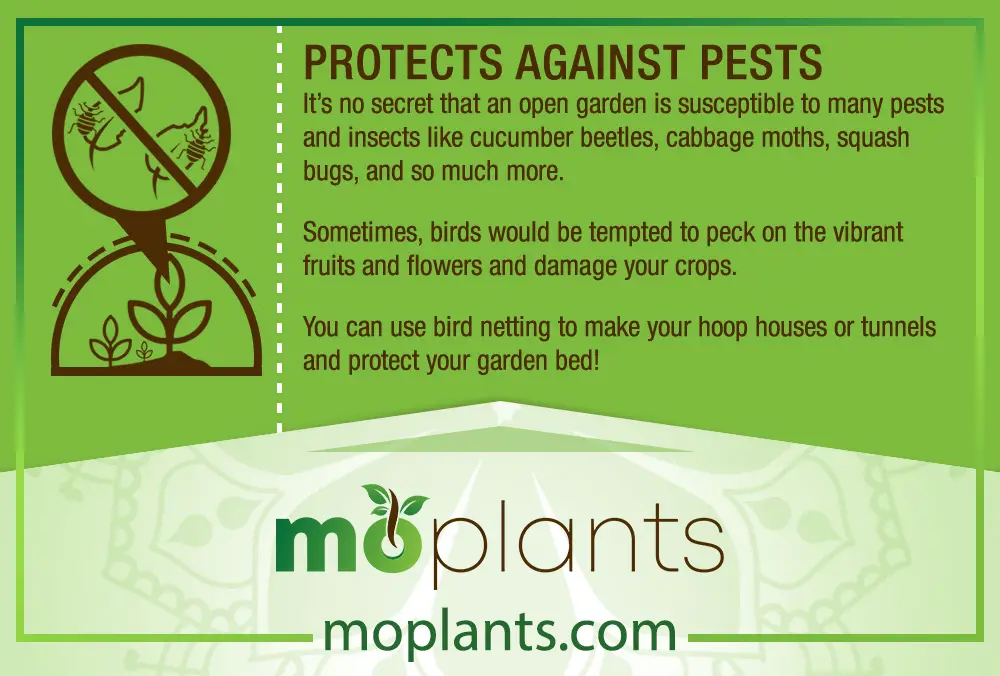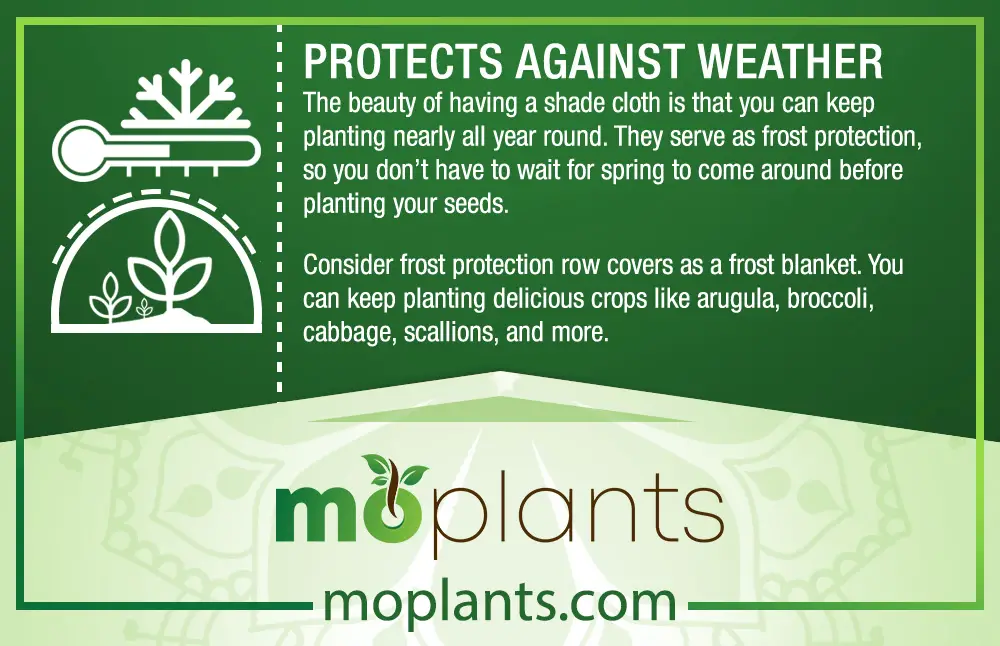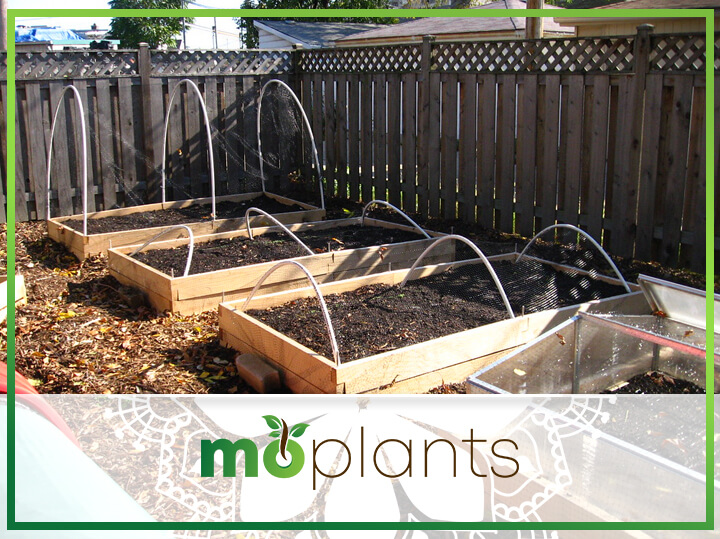If you’re someone like us who enjoy vegetable gardening, then we’re sure you know the value of having reliable garden hoops.
They provide a variety of benefits for your garden bed, and it’s one of the easiest ways to make sure your seeds grow and bloom to what they’re meant to be. You don’t have to go to great lengths to find an effective solution!
Today, we’ll give you all that you need to know about garden hoops and why you should have them. We don’t doubt you’ll have a fruitful looking garden bed in the end.
Ready to unlock the full potential of your garden? Keep reading and discover the way to a new gardening experience.
What Are Garden Hoops?
Before we go any more in-depth with our discussion, let’s get to know garden hoops a little bit more.
We’re sure you’ve already seen these hoops before, though you might not have paid close attention to it. But if there’s one thing we’re sure you noticed, it’s the plants the hoops are trying to protect.
In general, hoops play a vital role in protecting newly planted seeds, young sprouts, delicate flowers or crops, and many more.
A garden hoop keeps your plants safe from pests, birds, and even against an insect netting on your garden bed.
This is why it shouldn’t come as a surprise that you’ll find several garden beds covered with this row cover. It keeps your harvest protected against unwanted things you might not have even thought of.
Besides protecting your raised beds against pests and prey, row covers/hoops also do a great deal with protecting your garden against harsh weather conditions.
They serve as frost blankets and shield your plants against the hot sun rays or the cold breeze. It’s so handy and helpful to have in your garden bed!
You don’t have to worry about insects, frost, and more!
Protects Against Pests
It’s no secret that an open garden is susceptible to many pests and insects like cucumber beetles, cabbage moths, squash bugs, and so much more.
But that isn’t the only thing you’ll have to worry about because you’ve also got your cute flying birds to think of!
Sometimes, birds would be tempted to peck on the vibrant fruits and flowers and damage your crops. It’s a reality you’d have to face as a gardener, but not a reality you’d have to live with forever.
You can use bird netting to make your hoop houses or tunnels and protect your garden bed!

Protects Against Weather
Most gardeners tend to wait until spring before planting their seeds.
And it’s completely understandable! There’s just a lot to lose when you’re planting during winter, such as frost forming on the plants and potentially damaging and killing them.
The beauty of having a shade cloth is that you can keep planting nearly all year round. They serve as frost protection, so you don’t have to wait for spring to come around before planting your seeds.
Consider frost protection row covers as a frost blanket. You can keep planting delicious crops like arugula, broccoli, cabbage, scallions, and more.
And the best part of all, you can keep planting cold-sensitive vegetables without worrying about the frost. Genius right?

Infographic

What Materials Do You Need for Making Garden Hoops?
Regardless of the size of your garden, you can make your very own row cover.
And the beauty of being able to make your own is that you can always customize it according to your plants and the style you want.
There’s a ton of materials to choose from in making your row cover. Let’s get to know each of them and their advantages!
Hoops Material
Let’s start with hoops themselves, which shouldn’t be too much of a problem on your part.
There’s a lot of good materials out there that can double as hoop houses for your raised bed, and we’re sure you’ll be surprised!
PVC Pipes
Many people use PVC pipe for their hoops because of its accessibility, durability, and price.
For people who enjoy doing DIY projects, a PVC pipe comes in pretty handy. You can find a PVC pipe almost anywhere, regardless of the lengths, height, and size you’re trying to look for.
The material is also relatively easy to bend to make hoops and also highly durable. And if you’re looking for a material that won’t cost you a fortune, a PVC pipe should do the trick.
If you decide to use PVC hoops, there’s a great tip we can share with you.
Typically most people would bury the PVC pipes directly on the soil. While there’s generally nothing wrong with this, it’s not as stable compared to the secret we’re about to share with you.
Instead of directly planting your PVC pipes on the soil, use a stake. Put the stake on the soil, and slip the PVC pipes over the stake. And voila, it’s a lot more stable and durable in the long run.
Metal Hoops
Another great material is metal. Compared to PVC hoops, consider metal hoops to be more durable. They’re a lot thicker, stronger, greater in length, and long-lasting.
However, using metal hoops for the frame doesn’t make great DIY material because of how tough it is. They’re hard to bend, unlike PVC, and you’ll need a special tool for it.
That said, we highly recommend metal hoops for anyone who wants a permanent solution in their beds. With metal hoops, you can have yourself a permanent row cover that can last you decades!
Wire Hoops
A wire hoop is always handy to have around to make your tunnels.
This is especially true during the autumn, spring, and summer. They’re relatively easy to set-up and takedown, which makes them pretty handy in the garden.
You can use it to protect your plants against bugs trying to feast on your beds and even serve as frost protection.
However, there’s one thing we did notice about wire hoops. They don’t fare well compared to using a PVC pipe or metal hoops during the winter season. Why is that?
Well, generally, wire types can provide excellent protection all year round.
However, because of how pliable wire hoops are, they won’t withstand the weight of snow layers or frost accumulated on the cover, regardless of the length of the wire.
The wires will bend, the cover may rip, and the snow will fall on your plants. It’ll be a disaster you don’t want to face!
Row Cover Material
Once you’ve chosen what to use for your hoop tunnels, it’s time to check out the different row covers.
In making your choice, keep in mind that each is unique on its own and comes with its advantages. Some have varying degrees of frost protection, thickness, and more.
To help you with your search, we recommend you always check out the size of your row covers and the raised bed.
Make sure to get the exact width and length size of your raised bed so that it can give a complete protection to your row covers.
That said, let’s get straight to the different row cover materials and find the perfect match for your soil bed design.
Light Row Cover
Of all the types of shade cloth out there, the lightweight option is the most used and preferred choice of them all. It provides just enough protection against bugs, the cold weather, and more!
If you ask us, one of the beauties of using lightweight row covers is that it still provides a significant amount of natural sunlight to your crops.
Sunlight can still pass through, making sure your plants get enough sun that it needs.
And of course, during the winter, you can say that lightweight shade cloth provides pretty decent protection against frost.
It can keep your plants inside safe from the snow and occasional dropping temperatures. However, because it is lightweight, you might not find it to perform well under extreme conditions.
An excellent example of lightweight covers is insect barriers, typically made of mesh materials.
If you’d notice, the holes are small enough to prevent insects from getting in, as well as animals trying to score a meal in your garden.
Medium Row Cover
If you’re looking for a slightly heavier version of the lightweight shade cloth, this is it.
It’s a little thicker and heavier, which allows better protection against frost. It can withstand cold temperatures, but not for long.
Sunlight can still pass through, although a little less compared to lightweight row covers. It allows up to 70% of sunlight, which is enough, especially for plants that don’t require too much sun.
Heavy Row Cover
As its name suggests, heavy shade cloth covers come with a lot of weight. You’ll need to choose a durable hoop for this one, like PVC pipe or metal.
One thing you need to know about heavy row covers is that you’ll only use them for a temporary period.
When, to be exact? During the winter season, of course. Because of how thick and dense the fabric is, you’ll find a lot of luck growing your garden during the winter with this cover.
Although not as much as you’d want for a plant to receive, the fabric still allows sunlight to pass through.
Your plant only gets approximately 30% to 50% sunlight, which might not be enough for plants who love the sun.
Overall, we can say that heavyweight row covers are perfect for the winter season. But once the season has passed and it’s already springtime, you’d be better off choosing a lightweight row cover.
How Can You Make Sure Your Hoops Are Effective?
No matter how expensive and great the item you choose, it all boils down to how effective it is at the end of the day.
Sure, you bought the right product, but does it protect your soil and bed from insects and pests?
This is one of the most important questions that a lot of gardeners fail to ask themselves.
They focus all their attention and effort on the basic tools without realizing certain aspects in the process they’ve missed out on.
Well, we don’t want you to miss out on anything. As much as possible, we want you to come out of this article fully equipped with all the right knowledge and information you’ll need.
Luckily, there are easy ways to keep the hoops and fabric firmly planted on the ground.
Clip or Clamp Your Row Cover and Hoops
Clips and clamps come pretty handily for your row cover.
And not a lot of people realize this!
Often, some people would only cover their hoops with the cover and not clipping them securely in place. And when people end at this step, they’re usually left with just their hoops when a strong wind comes their way.
If you don’t want your row cover to get blown by the wind, we highly suggest you clip them to your hoops. Secure them in place, making sure that the slightest wind won’t break them apart.
Weigh Your Row Cover Down
Another essential thing to remember is to place weights at the end of your row cover. No matter how heavy your cover is, if the wind is strong, it will be blown away.
There’s a ton of items you can choose for weighing down your row cover, and you don’t even have to buy some of them. Instead, you can choose almost any heavy object you can find in your backyard!
You can use things like heavy rocks, logs, among others. Whatever you choose, make sure the object doesn’t have any sharp edges that would tear your shade cloth.
Conclusion
Whether you have open garden beds or a greenhouse, you’ll surely benefit a lot from having a garden hoop.
It can ensure your plants and vegetables’ success and growth, like kale, regardless of the growing season and what comes its way!
You don’t have to go to great lengths to keep your vegetables, say! Because with the right hoops and covers, you’ll have yourself a useful tool against all the harmful elements out there.
You don’t have to experience and suffer over it anymore!
We hope you learned a lot today. If you have any other questions in mind, feel free to send us a message or leave it in the comments section below. We’d love to help you out!
If you love this article, don’t forget to give it a like and share it with your friends and family! You might help them with their gardening experience!

